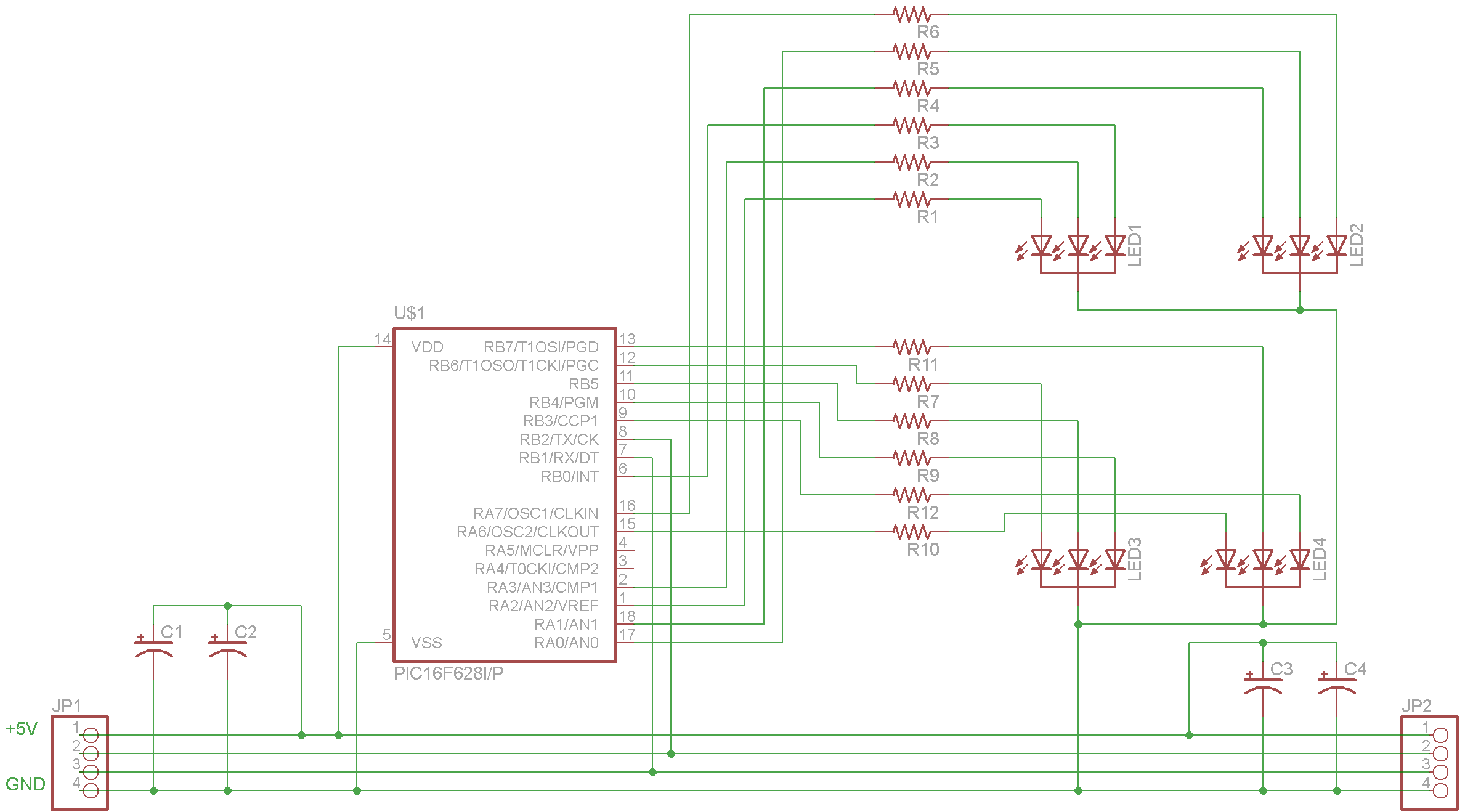
Pic16f690 Serial Communication C Code Tutorial Inverter
After that we will build a demo project to explore the library. Finally we will burn this demo in a PIC16F877A and establish a serial communication with PC. Serial Communication. Their are several serial communication standards like RS232, SPI, I2C etc. Of which RS232 is a asynchronous method. That means it does NOT have a synchronizing clock line. Pic16f690 Serial Communication C Code For Loop. Sometimes work and sometimes no. I use a sensor QRE 1113, have you a tutorial with them sensor.
• Functions • Embedded Software Integration • • • C Programming • • Articles • • • • • • • • • • • • • • • • • • • • • • MPASM™ Assembly Language Programming • • • • MPLAB® Harmony • • What is the MPLAB Harmony Framework? A primary concern when setting the configuration bits for any application is the clock source. The example programs were written for a development board which does not have an external clock source for the MCU. As a result the configuration bits direct the PIC16LF1937 to use the internal RC oscillator combined with the 4x PLL as the clock source. No other configuration enabled features are needed by the example programs. Assembly Language For the example programs written in assembly language the configuration bits are coded in-line using the __CONFIG directive. To install the lab files simply unzip the downloaded file into any directory on your computer.
The 'Getting Started' document in the downloaded project files shows how to install the compiler, MPLAB X IDE and Proteus. Configuring the Demonstration Programs When installed, the labs files contain MPLAB X projects for each demonstration. The demo projects have all been configured to use MPLAB X IDE's internal simulator as the 'hardware tool' You have the option of selecting the F1 Evaluation board as the simulation tool. If running Windows you also have the option of selecting LabCenter's Proteus VSM as the simulator. Changing the default settings can be done from the Project Properties Window for each of the projects.
Notice: ARM and Cortex are the registered trademarks of ARM Limited in the EU and other countries. Information contained on this site regarding device applications and the like is provided only for your convenience and may be superseded by updates. It is your responsibility to ensure that your application meets with your specifications. MICROCHIP MAKES NO REPRESENTATIONS OR WARRANTIES OF ANY KIND WHETHER EXPRESS OR IMPLIED, WRITTEN OR ORAL, STATUTORY OR OTHERWISE, RELATED TO THE INFORMATION, INCLUDING BUT NOT LIMITED TO ITS CONDITION, QUALITY, PERFORMANCE, MERCHANTABILITY OR FITNESS FOR PURPOSE. Microchip disclaims all liability arising from this information and its use. Use of Microchip devices in life support and/or safety applications is entirely at the buyer's risk, and the buyer agrees to defend, indemnify and hold harmless Microchip from any and all damages, claims, suits, or expenses resulting from such use.
No licenses are conveyed, implicitly or otherwise, under any Microchip intellectual property rights.
Jun 26, 2015 - We will write to you only about the most important. To bookmarks. USA Florida Selfie Disneyland stick for selfie. Prezentaciya o disnejlende v amerike. 0.6 0.6 monthly 0.6. Mapa Amerike sa gradovima, Mapa SAD. Geografska karta. Turisticka Satelitska mapa - geografska karta Satelitski snimak Google karta na srpskom. Putovanja 2019, karta. You just clipped your first slide! Clipping is a handy way to collect important slides you want to go back to later. Now customize the name of a clipboard to store your clips. 0.2 -v-disnejlende-nas-zhdet-konceptualnaya-plastinka-po-motivam-utinyx-istorij.
PIC 16F877 series normally has five input/output ports. They are used for the input/output interfacing with other devices/circuits.
Most of these port pins are multiplexed for handling alternate function for peripheral features on the devices. All ports in a PIC chip are bi-directional. When the peripheral action is enabled in a pin, it may not be used as its general input/output functions. The PIC 16F877 chip basically has 5 input/output ports. The five input/output ports and its functions are given below. When enabling peripheral functions, more care should be taken in defining TRIS bits for each PORT C pin as compared to other.
Some peripherals override the TRIS bit to make a pin an output, while other peripherals override the TRIS bit to make a pin an input. Since the TRIS bit override is in effect while the peripheral is enabled, read-modify write instructions (BSF, BCF, and XORWF) with TRISC as the destination, should be avoided. The user should refer to the corresponding peripheral section for the correct TRIS bit settings.
PORT E has only three pins (RE0/RD/AN5, RE1/WR/AN6 and RE2/CS/AN7) which are individually configurable as inputs or outputs. These pins controllable by using its corresponding data direction register “TRIS E”.
These pins also have Schmitt Trigger input buffers. The PORT E pins become the I/O control inputs for the microprocessor PORT when bit PSPMODE is set. In this mode, the user must make certain that the TRIS E bits are set and that the pins are configured as digital inputs.